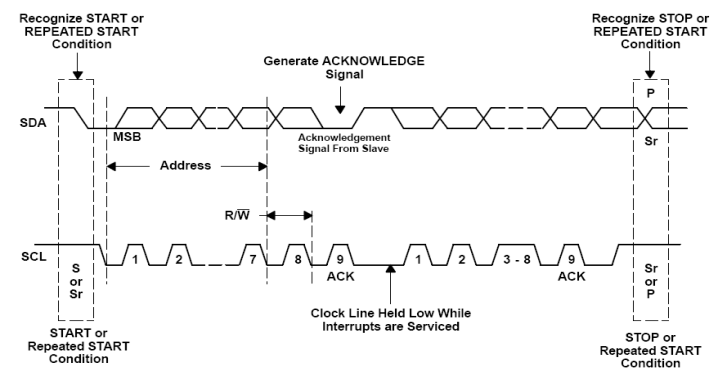SLVSBD1B December 2012 – August 2025 TPS65175
PRODUCTION DATA
- 1
- 1 Features
- 2 Applications
- 3 Description
- 4 Pin Configurations
- 5 Ordering Information #GUID-A66BA10C-7D19-4133-842F-4CC0C2AD52C6/SLVSAP8211
- 6 Specifications
- 7 DAC Range Summary
-
8 Detailed Description
- 8.1 Boost Converter (VDD)
- 8.2 Boost Converter Design Procedure
- 8.3 Buck Converter (VCC)
- 8.4 Buck Converter Design Procedure
- 8.5 Synchronous Buck Converter (HVDD)
- 8.6 Synchronous Buck Converter Design Procedure
- 8.7 Positive Charge Pump Controller (VGH) and Temperature Compensation
- 8.8 Positive Charge Pump Design Procedure
- 8.9 VGH Temperature Compensation
- 8.10 Negative Charge Pump (VGL)
- 8.11 Negative Charge Pump Design Procedure
- 8.12 P-Vcom Voltage and Gain (VCOM)
- 8.13 P-Vcom Design Procedure
- 8.14 P-Vcom Temperature Compensation
- 8.15 Gamma Buffer (GMA1-GMA6)
- 8.16 Level Shifters
- 8.17 State Machine
- 8.18 GCLK
- 8.19 MCLK
- 8.20 GST
- 8.21 E/O
- 8.22 Reverse
- 8.23 VGH_F and VGH_R
- 8.24 VST
- 8.25 RESET
- 8.26 EVEN and ODD
- 8.27 Abnormal Operation
- 8.28 CLK1 to CLK6
- 8.29 Gate Voltage Shaping
- 8.30 Power Supply Sequencing (CLK1-CLK6, VST, RESET)
- 8.31 Power Supply Sequencing (EVEN, ODD)
- 8.32 Power Supply Sequencing (VGH_F, VGH_R)
- 101
- 8.33 Typical Applications
- 9 APPENDIX – I2C INTERFACE
- 10Detailed Description
- 11Register Map
- 12DAC Registers
- 13Electrostatic Discharge Caution
- 14Revision History
- 15Mechanical, Packaging, and Orderable Information
9.1 I2C Serial Interface Description
The TPS65175/A communicates through an industry standard two-wire interface, I2C, to receive data in slave mode.
The TPS65175/A integrates a non-volatile memory (EEPROM) that allows the storage of the DAC values into the registers with a capability of 1000 programming cycles maximum.
I2C is a 2-wire serial interface developed by Philips Semiconductor (see I2C-Bus Specification, Version 2.1, January 2000). The bus consists of a data line (SDA) and a clock line (SCL) with pull-up structures. When the bus is idle, both SDA and SCL lines are pulled high. All the I2C compatible devices connect to the I2C bus through open drain I/O pins, SDA and SCL. A master device, usually a microcontroller or a digital signal processor, controls the bus. The master is responsible for generating the SCL signal and device addresses. The master also generates specific conditions that indicate the START and STOP of data transfer. A slave device receives and/or transmits data on the bus under control of the master device.
The TPS65175/A works as a slave and supports the following data transfer modes, as defined in the I2C-Bus specification: standard mode (100 kbps) and fast mode (400 kbps). The data transfer protocol for standard and fast modes is exactly the same, therefore they are referred to as F/S-mode in this document. The TPS65175/A supports 7-bit addressing. The device 7-bit address is defined as ‘0100000X’ (see Figure 9-1), where the LSB enables the write or read function.

The device that initiates the communication is called a master, and the devices controlled by the master are slaves. The master generates the serial clock on SCL, controls the bus access, and generates START and STOP conditions (see Figure 9-2). A START initiates a new data transfer to slave. Transitioning SDA from high to low while SCL remains high generates a START condition. A STOP condition ends a data transfer to slave. Transitioning SDA from low to high while SCL remains high generates a STOP condition.
 Figure 9-2 START and STOP Conditions
Figure 9-2 START and STOP ConditionsThe master then generates the SCL pulses, and transmits the 7-bit address and the read/write direction bit R/(W) on the SDA line. During all transmissions, the master ensures that the data is valid. A valid data condition requires the SDA line to be stable during the entire high period of the clock pulse (see Figure 9-3). All devices recognize the address sent by the master and compare it to their internal fixed addresses. Only the slave device with a matching address generates an Acknowledgment, ACK, (see Figure 9-4) by pulling the SDA line low during the entire high period of the SCL cycle. Upon detecting this Acknowledgment, the master knows that communication link with a slave has been established.
 Figure 9-3 Bit Transfer on the Serial Interface
Figure 9-3 Bit Transfer on the Serial Interface Figure 9-4 Acknowledge on the I2C Bus
Figure 9-4 Acknowledge on the I2C BusThe master generates further SCL cycles to either transmit data to the slave (R/(W) bit = 0) or receive data from the slave (R/(W) bit = 1). In either case, the receiver needs to acknowledge the data sent by the transmitter. So an acknowledge signal can either be generated by the master or by the slave, depending on which one is the receiver. 9-bit valid data sequences consisting of 8-bit data and 1-bit acknowledge can continue as long as necessary. To terminate the data transfer, the master generates STOP condition by pulling the SDA line from low to high while the SCL line is high (see Figure 9-5). This releases the bus and stops the communication link with the addressed slave. All I2C compatible devices must recognize the stop condition. Upon the receipt of a stop condition, all devices know that the bus is released, and they wait for a start condition followed by a matching address.
 Figure 9-5 Bus Protocol
Figure 9-5 Bus ProtocolAttempting to read data from register addresses not listed in the following section will result in 00h being read out.